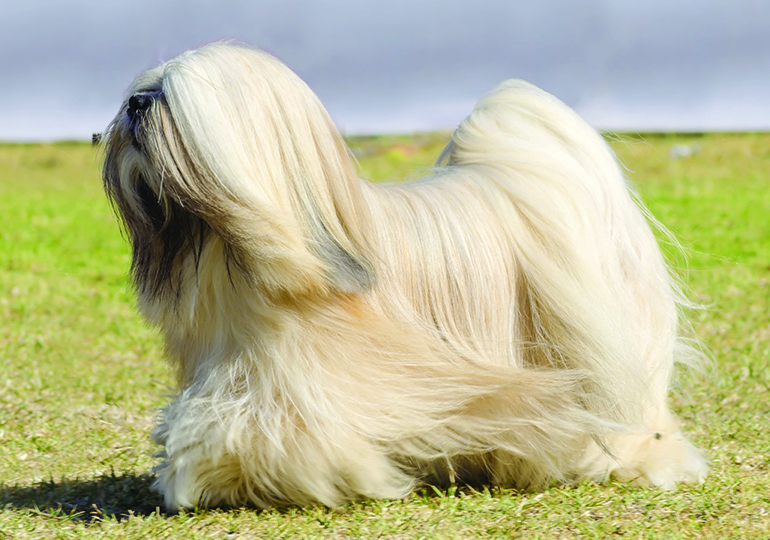GROUP 7 - NON SPORTING
History
There are claims the Lhasa Apso has been in existence since 800 BC, but these are difficult to substantiate, given the earliest written records of Tibet appeared around 639 AD. The little, shaggy-coated, Tibetan dog was considered a talisman and was never sold, but given only as a gift from the Dalai Lama. Because it was held in such high regard, the early pioneers of the breed found it difficult to obtain breeding stock. Joan Beard imported the first Lhasa Apso to Australia in 1961.
Characteristics
The Lhasa Apso has a unique temperament. Functioning as a sentinel or warning dog, its suspicion of strangers is an attribute prized by the Tibetans. It is a calm, intelligent, independent, dignified dog, and at times a little stubborn. The breed is also playful and mischievous, even into old age, and is intensely loyal to its family.
Appearance
The Lhasa Apso should give the appearance of a well-balanced, solid dog, slightly longer than tall, around 25cm in height and is bred in a range of colours: golds, grizzle, slate, smoke, and particoloured. Its long coat parts in the middle, from the tip of the nose to the tail. It has a good head fall and the tail is carried well over the back so that the hair tends to blend with the body coat. The breed’s head and expression are important. Eyes should be dark with a soft, gentle expression, not round and with no white showing. The muzzle should appear rectangular in shape when viewed from the front and in profile give the appearance of bluntness. Its ears are pendant and heavily feathered.
Grooming
The Lhasa Apso is a high maintenance breed; it does not shed its coat as other breeds do and its undercoat becomes tangled and matted if not brushed out. As a general guide, to prepare a dog in full coat, it takes approximately two hours to bath and groom, depending on the coat. Changing hair ties and maintenance grooming would be done every other day. Most pet owners find it more practical to keep the Lhasa Apso clipped.
Health
The breed is fortunate to have very few health issues. Its average life span is 15 years, but can live to be much older. Some common problems are dry eye, cherry eye and skin allergies. Progressive retinal atrophy (PRA) also exists and testing has been conducted for a number of years.
Suitability
The Lhasa Apso is an affectionate and loving dog to its family, but it can be wary of strangers. Its acute sense of hearing and intelligence make it a good guard dog. The breed is best suited to those looking for a companion dog, and if grooming is not your thing, most pet owners choose to keep their Lhasa Apso in a ‘puppy’ clip. It will readily adapt itself to the family’s routine and its playful nature and enjoyment of human company will make the Lhasa Apso a great addition to your home.
Words: Marilyn Foster
Image: F8grapher | Dreamstime.com
In Conclusion
Now you know a little about the Lhasa Apso, you may think that this is the dog for you. Before you make a decision, please make contact with the breed club or your State controlling body for purebred dogs. They will be able to give you information about available puppies and also suggest dog shows where you can see the breed and speak to breeders. In this way you will gain a better perspective of the Lhasa Apso and its needs, and whether this breed would suit your lifestyle.
















